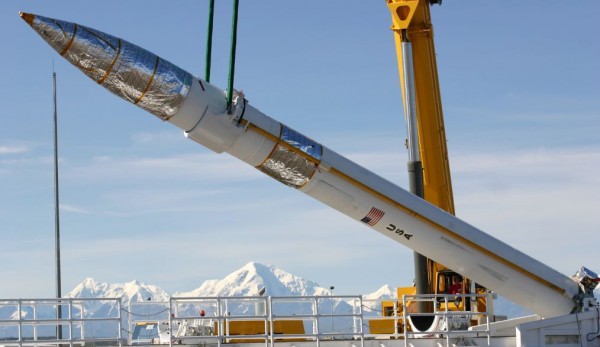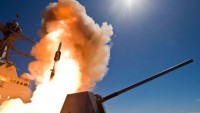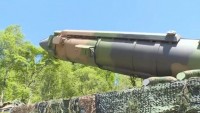Hawaii More Threatened by North Korean ICBMs than US Mainland
| Arthur Dominic Villasanta | | Apr 29, 2017 10:46 AM EDT |
(Photo : US Army) GMD interceptor in Alaska.
When Kim Jong-un says he plans to launch nuclear missiles against the United States, the target he may well have in mind isn't California or the continental U.S. but a much closer target -- Hawaii.
The West Coast of the United States sits nearly 9,700 km from North Korea while Hawaii is 7,400 km away, and Hawaii's closer proximity to North Korea's ballistic missiles means the U.S. must seriously consider building a ballistic missile interceptor in Hawaii to protect the islands in the future, said Adm. Harry Harris, Commander, United States Pacific Command (USPACOM).
Like Us on Facebook
"Kim Jong-un is clearly in a position to threaten Hawaii today, in my opinion," said Adm. Harris.
"I believe that our ballistic missile architecture is sufficient to protect Hawaii today, but it can be overwhelmed. And if Kim Jong Un or someone launched (intercontinental ballistic missiles) against the United States, then somewhere we'd have to make a decision on which ones to take out or not."
Existing interceptors such as those fired by the Ground-Based Midcourse Defense (GMD) anti-ballistic missile system can take out a finite number of incoming intercontinental ballistic missiles (ICBMs). If an enemy fired enough missiles in a single attack to overwhelm that defensive capacity, some of these missiles will escape destruction by GMD.
GMD intercepts incoming warheads in space, during the midcourse phase of ballistic trajectory flight. It's a major component of America's missile defense strategy to defeat ICBMs.
Adm. Harris said this vulnerability must be eliminated and he supports the pending deployment of a defensive radar system in Hawaii being considered for development by the Missile Defense Agency (MDA), the organization responsible for developing a layered defense against ballistic missiles.
The Navy's Arleigh Burke-class guided-missile destroyers now being equipped with Aegis Baseline 9, specifically developed to defeat ballistic missiles.
"I think the defensive Hawaii radar is coming," Adm. Harris noted.
"I think the interceptors piece is yet to be determined. But I believe we should certainly look at it. I believe we would not be doing our job if we didn't."
TagsKim Jong Un, United States, Hawaii, West Coast, Adm. Harry Harris, United States Pacific Command, intercontinental ballistic missiles, Ground-based Midcourse Defense, Aegis Baseline 9
©2015 Chinatopix All rights reserved. Do not reproduce without permission
EDITOR'S PICKS
-

Did the Trump administration just announce plans for a trade war with ‘hostile’ China and Russia?
-

US Senate passes Taiwan travel bill slammed by China
-

As Yan Sihong’s family grieves, here are other Chinese students who went missing abroad. Some have never been found
-

Beijing blasts Western critics who ‘smear China’ with the term sharp power
-

China Envoy Seeks to Defuse Tensions With U.S. as a Trade War Brews
-

Singapore's Deputy PM Provides Bitcoin Vote of Confidence Amid China's Blanket Bans
-

China warns investors over risks in overseas virtual currency trading
-

Chinese government most trustworthy: survey
-

Kashima Antlers On Course For Back-To-Back Titles
MOST POPULAR
LATEST NEWS
Zhou Yongkang: China's Former Security Chief Sentenced to Life in Prison

China's former Chief of the Ministry of Public Security, Zhou Yongkang, has been given a life sentence after he was found guilty of abusing his office, bribery and deliberately ... Full Article
TRENDING STORY

China Pork Prices Expected to Stabilize As The Supplies Recover

Elephone P9000 Smartphone is now on Sale on Amazon India

There's a Big Chance Cliffhangers Won't Still Be Resolved When Grey's Anatomy Season 13 Returns

Supreme Court Ruled on Samsung vs Apple Dispute for Patent Infringement

Microsoft Surface Pro 5 Rumors and Release Date: What is the Latest?












